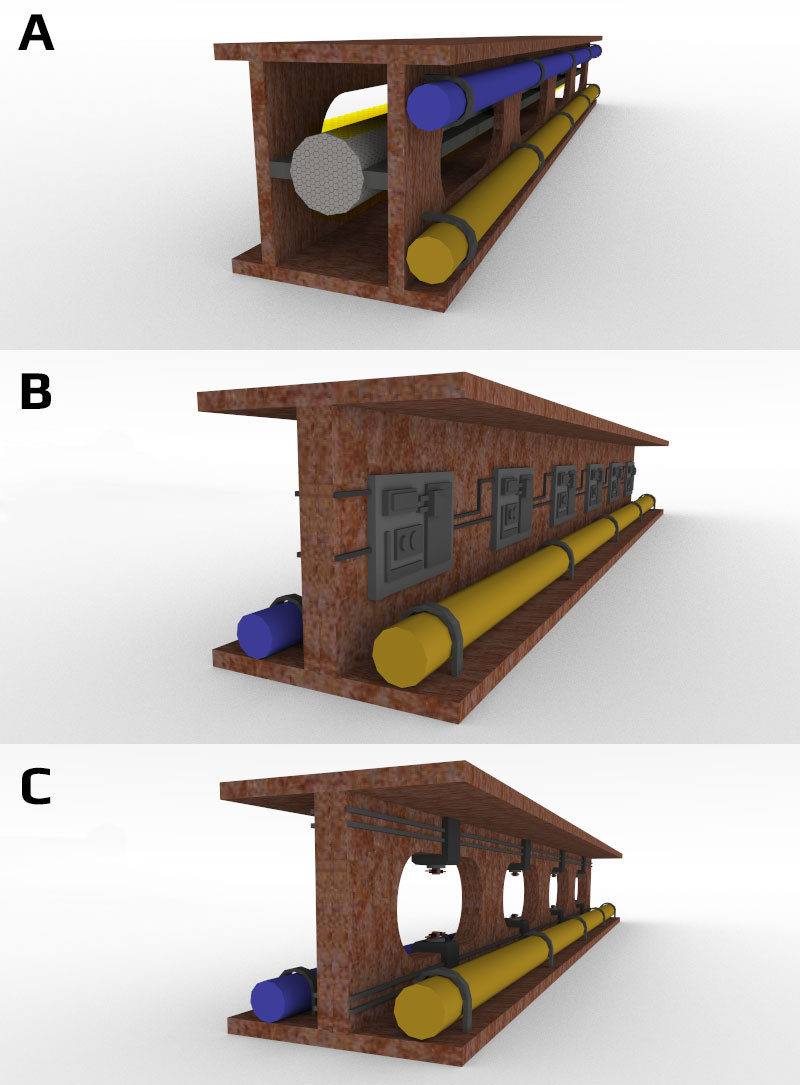The TOS Enterprise underwent the TMP refit in 2212, so in putting together a 3D model of the internal structure I'm only projecting our current engineering techniques forward 195 years. The way we build boats for example hasn't really changed much in the past 200 years, it's just we're using better materials and have better manufacturing equipment these days.
For the Trek universe the biggest advancement in structural design seems to be the inclusion of structural integrity fields, making structures significantly stronger than they otherwise would be. I envision this working somewhat like an electrical charge, which is conducted along every structural member to stiffen the framework and tighten everything up like a tensed muscle.
The hardware to achieve this has to be present in every beam, and it also has to be maintainable whilst in deep space. A gap in the field would likely cause areas of the ship to pancake under the stresses of impulse thrust and warp travel.
Here's what I've come up with so far. Which do you think looks best, or makes the most practical sense? You're looking at the hardware for the Structural Integrity and Inertial Dampening fields, along with a couple of generic conduits.

For the Trek universe the biggest advancement in structural design seems to be the inclusion of structural integrity fields, making structures significantly stronger than they otherwise would be. I envision this working somewhat like an electrical charge, which is conducted along every structural member to stiffen the framework and tighten everything up like a tensed muscle.
The hardware to achieve this has to be present in every beam, and it also has to be maintainable whilst in deep space. A gap in the field would likely cause areas of the ship to pancake under the stresses of impulse thrust and warp travel.
Here's what I've come up with so far. Which do you think looks best, or makes the most practical sense? You're looking at the hardware for the Structural Integrity and Inertial Dampening fields, along with a couple of generic conduits.




